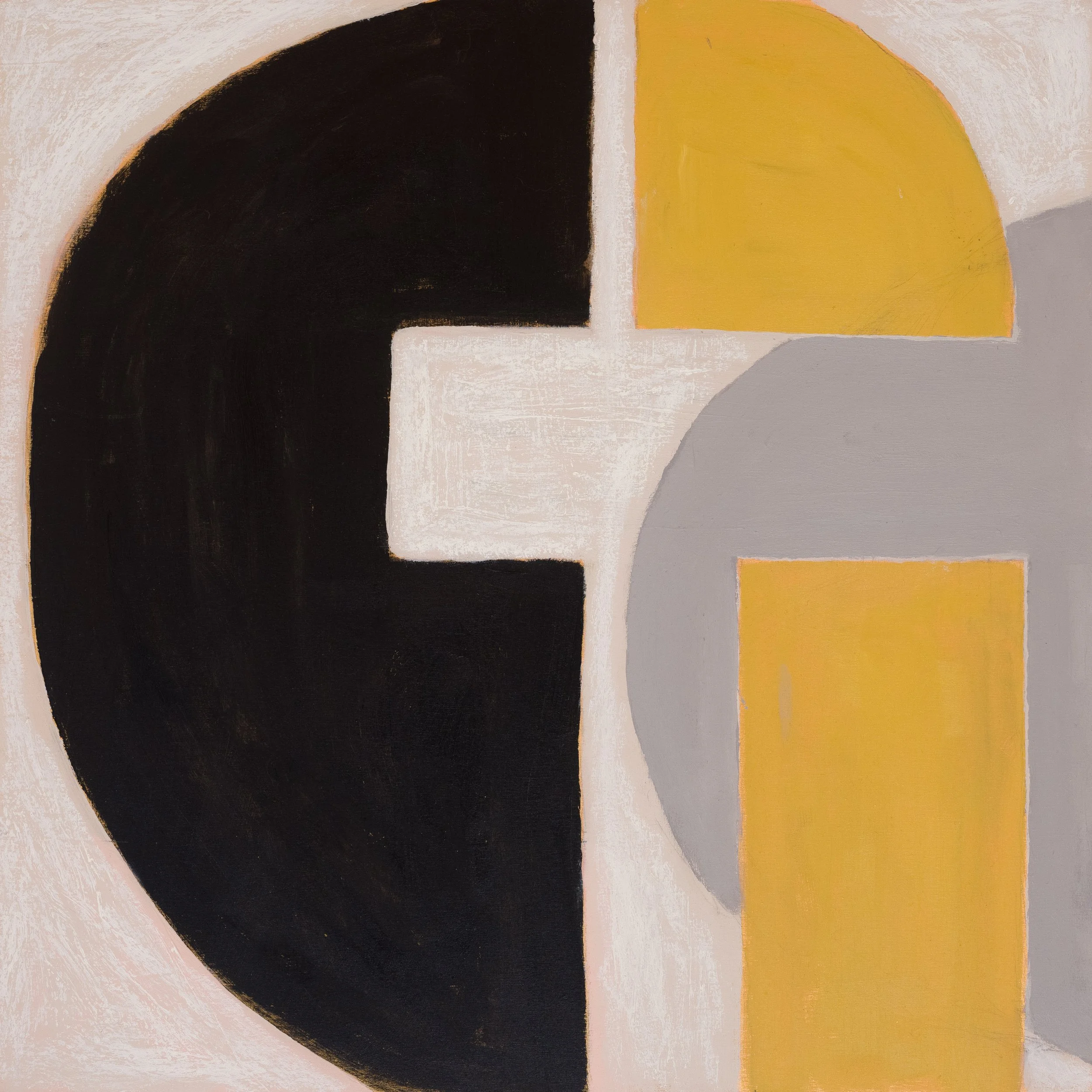Alison Goodwin: THE TIL
September 7 - 30, 2023
Featuring Thomas Higgins in the side gallery
Opening Reception: Thurs., Sept. 7, 5-7 pm
the Til n. the reservoir of all opportunities still available to you at this point in your life - all the countries you still have the energy to explore, the careers you still have the courage to pursue, the skills you still have the time to develop, the relationships you still have the time to make - like a pail of water you carry around in your head, which starts off feeling like an overwhelming burden but steadily draws down as you get older, splashing gallons over the side every time you take a step. (From the till, a shopkeeper’s register filled with unspent change + until.)
- Koenig, John. The Dictionary of Obscure Sorrows. New York: Simon & Schuster, 2021.
When my work was first exhibited at Greenhut in 1989, it was characterized by abstract geometric patterns that were seemingly woven together in tapestries to create surreal landscapes. In a review of my first solo show, Margot McWilliams wrote:
“Goodwin simplifies the elements of the landscape, placing them on planes so that they begin to totter off in tilted directions. She divides her canvases into geometric elements, and then decorates them fully with repeated motifs of spirals and rectangles. . . . She saturates the whole with colors that play vibrantly with each other.” (Casco Bay Weekly, July 25, 1991)
I was just 30 years-old and this style was new to me at the time; I had recently abandoned my more traditional landscapes and still lives that had gotten me through art school. I was discovering my voice.
My geometric patterns - with their saturated colors and unruly lines - remained the vocabulary of my work as I began to paint interiors, villages, and still lives that expressed both my own skewed perspective on the world and my sense of home and appreciation for my life in Maine and Vermont. Geometric shapes also formed the faces in my figurative work and my portraits of Saints.
Each pattern I create is - in my mind- its own abstract design. My wallpapers and floors, leaves and waves, eyes and lips, are each their own abstracted element. Many of my interiors also have a painting within a painting- a modernist abstract on the wall of a Fauvist room. Throughout my career, it is these abstract shapes and patterns that I focus on as I work; the final piece is a composition built of these many individual parts, but my inner world is preoccupied with the abstract.
My career in now in its 4th decade and I wish to allow this inner voice its opportunity to be fully expressed, without the distraction of lyric or narrative. This current body of work is what I’ve been whispering all along in every image I’ve created. Now I want it to be heard in a full-throated cry saying that this, in fact, is how I see the world. There is so much that we know and feel within that we rarely get a chance to isolate, identify, and express in a focused and unique way. In the images in my current body of work, I’ve allowed myself to settle into a specific feeling or vision and give the complexities of that emotional space my full attention. ~ Alison Goodwin
(CLICK IMAGE TO ENLARGE; CURSOR OVER ENLARGED IMAGE FOR DETAILS)
Thomas Higgins - Bogs to Beaches
Painting for Thomas Higgins is an active and intuitive process of participating in natural spaces. By working primarily on site through direct sensory experience, he seeks a mode of trenchant, painterly realism. Of fundamental interest is the visual complexity of bogs and other ecosystems that inspire his pursuit of the miraculous in the commonplace. Through his expressive mark-making and gestural brushstrokes, Higgins strives for the point when all of the elements have meshed into an essential, emotive image.
Higgins grew up in New Hope, Pennsylvania, graduated cum laude from Maryville College (Tennessee) and received his MS and MFA in painting and drawing from the University of Wisconsin-Madison. His paintings have been displayed in numerous exhibitions in the U. S. and abroad, including at U. S. embassies in Canada, Hungary, Iceland, Gambia, Greece and France. Residencies for which he was selected include Acadia National Park and the Joseph A. Fiore Art Center.
Having taught at Marietta College (Ohio), Colby College, and in the University of Maine System, Higgins retired as Professor Emeritus from the University of Maine at Farmington. He continues to be an outdoor enthusiast and advocate for untrammeled places.
(CLICK IMAGE TO ENLARGE; CURSOR OVER ENLARGED IMAGE FOR DETAILS)



































